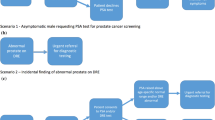Abstract
In the present study, oxidative stress and lymphocytic DNA damage in both pre-op and post-op benign prostrate hyperplasia (BPH) patients with age >50 years was evaluated and compared with normal healthy subjects (controls- without any evidence of disease) of the same sex and age group. From December 2007 to November 2009, oxidative stress in 45 BPH patients were evaluated both before (pre-op patients) and after 7 days of surgery (post-op patients) in terms of measurements of plasma levels of (1) various anti-oxidative enzymes, (2) non-enzymatic antioxidants and (3) malondialdehyde which is a product of lipid peroxidation. The lymphocyte DNA damage was also evaluated by single cell alkaline gel electrophoresis in terms of tail length migration in these patients. These values were compared with their respective control subjects of similar sex and age group. The activities of antioxidant enzymes and the levels of antioxidant, reduced glutathione were found significantly decreased (p < 0.05) in serum samples of pre-operative group of BPH patients as compared to the controls. These altered parameters increased significantly (p < 0.05) and returned to their near normal control values, but not up to baseline values, in post operative patients i.e. after the cancer load was decreased by surgery. Lymphocytic DNA damage was found to be significantly increased in pre-op group as compared to controls and was reduced after surgery in post-op group. The present study therefore, shows significantly increased levels of oxidative stress and DNA damage in BPH patients which were reduced after removal of tumour load. Thus oxidative damage plays an important role in prostate tumourogenesis and timely management of oxidative stress can be of importance in preventing the occurrence of BPH.

Similar content being viewed by others
References
Nelson WG, De Marzo AM, Isaacs WB. Prostate cancer. N Engl J Med. 2003;349:366–81.
Malins DC, Johnson PM, Barker EA, Polissar NL, Wheeler TM, Anderson KM. Cancer-related changes in prostate DNA as men age and early identification of metastasis in primary prostate tumors. Proc Natl Acad Sci USA. 2003;100:5401–6.
Ripple MO, Henry WF, Rago RP, et al. Prooxidant–antioxidant shift induced by androgen treatment of human prostate carcinoma cells. J Natl Cancer Inst. 1997;89(1):40–8.
Buege JA, Aust SD. Microsomal lipid peroxidation. Methods Enzymol. 1978;52:302–10.
Marklund SL. Extracellular superoxide dismutase in human tissues and human cell lines. J Clin Invest. 1984;74:1398–403.
Claiborne A. Catalase activity. In: Green Wald RA, editor. CRC handbook of methods for oxygen radical research. Boca Raton: CRC Press; 1985. p. 283–4.
Carlberg I, Mannervik B. Purification and characterization of the flavoenzyme glutathione reductase from rat liver. J Biol Chem. 1975;250:5475–80.
Habig WH, Pabst MJ, Jacoby WH. Glutathione-S-transferases: the first step in mercapturic acid formation. J Biol Chem. 1974;249:7130–9.
Jollow DJ, Mitchell JR, Zampaglione N, Gillete JR. Bromobenzene induced liver necrosis: protective role of glutathione and evidence for 3,4-bromobenzene oxide as the hepatotoxic intermediate. Pharmacology. 1974;11:151–69.
Singh NP, McCoy MT, Tice RR, Schneider EL. A simple technique for quantitation of low levels of DNA damage in individual cells. Exp Cell Res. 1988;175:184–91.
Roy A. Mechanisms of ageing and development. Cell. 2000;124:987–8.
Taplin ME, Ho SM. Clinical review 134: the endocrinology of prostate cancer. J Clin Endocrinol Metab. 2001;86:3467–77.
McConnell JD. Prostatic growth: new insights into hormonal regulation. Br J Urol. 1995;76(Suppl 1):5–10.
McConnell JD, Barry MJ, Bruskewitz RC, et al. Benign prostatic hyperplasia: diagnosis and treatment. Clinical practice Guideline, number 8. Rockville: Agency for Health Care Policy and Research. Public Health Service, U.S. Department of Health and Human Services; 1994.
Fleshner NE, Klotz LH. Diet, androgens, oxidative stress and prostate cancer susceptibility. Cancer Metastasis Rev. 1998–1999;17(4):325–30.
Bergendi L, Benes L, Ferencik M. Chemistry, physiology and pathology of free radicals. Life Sci. 1999;65:1865–74.
Suhail N, Bilal N, Khan HY, Hasan S, Sharma S, Khan F, Mansoor T, Banu N. Effect of vitamins C and E on antioxidant status of breast-cancer patients undergoing chemotherapy. J Clin Pharm Ther. 2012;37(1):22–6.
Albanes D, Heinonen OP, Huttunen JK, et al. Effects of alpha-tocopherol and beta-carotene supplements on cancer incidence in the alpha-tocopherol beta-carotene cancer prevention study. Am J Clin Nutr. 1995;62(Suppl 6):1427S–30S.
Gann PH, Ma J, Giovannucci E, et al. Lower prostate cancer risk in men with elevated plasma lycopene levels: results of a prospective analysis. Cancer Res. 1999;59:1225–30.
Author information
Authors and Affiliations
Corresponding author
Rights and permissions
About this article
Cite this article
Ahmad, M., Suhail, N., Mansoor, T. et al. Evaluation of Oxidative Stress and DNA Damage in Benign Prostatic Hyperplasia Patients and Comparison with Controls. Ind J Clin Biochem 27, 385–388 (2012). https://doi.org/10.1007/s12291-012-0229-4
Received:
Accepted:
Published:
Issue Date:
DOI: https://doi.org/10.1007/s12291-012-0229-4




